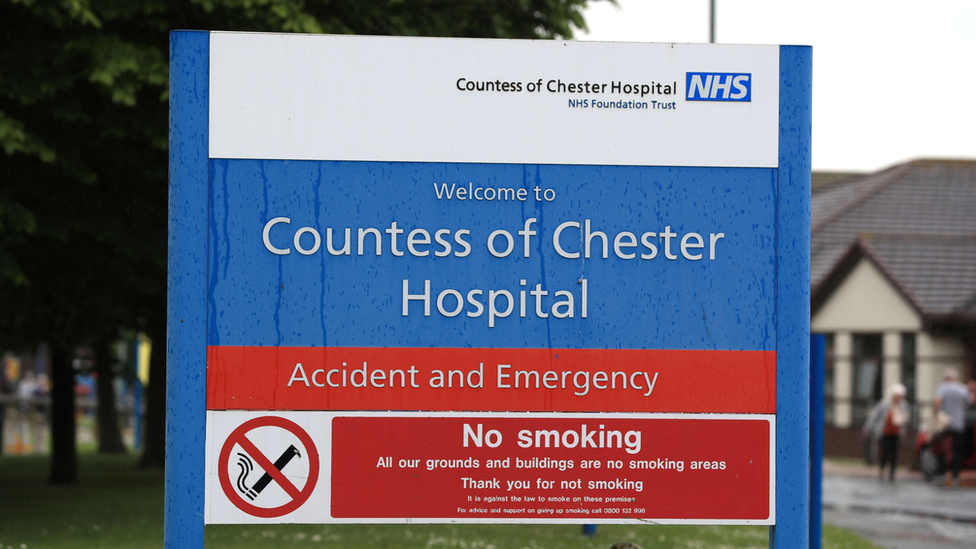Lucy Letby: Bruises on baby not caused by CPR, trial told
- Published

Lucy Letby, originally of Hereford, denies murdering and attempting to murder babies in a hospital ward
Bruises found on a baby boy's liver following his death could not have been caused by CPR, a medical expert has told the trial of nurse Lucy Letby.
The 33-year-old is alleged to have attacked the newborn infant, referred to as Child O, on the Countess of Chester Hospital's neonatal unit in June 2016.
The nurse is charged with murdering seven babies and attempting to murder 10 others between 2015 and 2016.
She denies all charges.
Manchester Crown Court previously heard that Child O was one of a set of triplets, who was born in good condition and was stable until the afternoon of 23 June.
Dr Andreas Marnerides, an expert in neonatal pathology, said he believed Child O's death was a result of an "inflicted traumatic injury to the liver" and the injection of air into the boy's bloodstream via a nasogastric tube.
He said the level of injury sustained by the boy's liver was similar to what you would see after a traffic collision.
In cross examination, Dr Marnerides repeatedly rejected the suggestion that the injury could have been caused by vigorous CPR, which Child O needed on several occasions on 23 June.
"I have never seen this type of injury in the context of CPR," he said.
Ben Myers KC, defending, then put it to Dr Marnerides that the level of force required to cause such injury in a premature baby would be less than that needed in a grown child, to which the medic agreed.
Responding to Mr Myers's question about whether he knew the minimum force needed to cause such damage, he said there was "no way of measuring the force in a baby because we cannot conduct such experiments".
Dr Marnerides said that he believed "the force required would be of the magnitude of forces generated from a baby jumping on a trampoline and falling off".

The nurse is accused of carrying out the attacks at Countess of Chester Hospital
Mr Myers then asked him whether vigorous CPR could be "categorically excluded" as a possibility for Child O's injuries.
Dr Marnerides compared it to the hypothetical discovery of a dead man in the desert with a pot next to him, saying it could be "possible" that a helicopter flew over and dropped the pot on his head, but that it was not "probable".
He previously said Child A, a twin boy, died as a result of an injection of air into his bloodstream.
Another boy, Child C, was subjected to an excessive infusion or injection of air into his nasogastric tube, he added.
He said the "likely explanation" for the death of Child D, a girl, was an air embolism into her circulation, while another girl, Child I, received an excessive injection of air into her stomach.
Dr Marnerides agreed that, in all of the cases, he had relied upon expert reports from Dr Dewi Evans, Dr Sarah Bohin and other clinicians.
He told the court that to discount the clinical evidence in forming his reports was like "asking someone to explain physics without using mathematics".
The trial continues.

Why not follow BBC North West on Facebook, external, Twitter, external and Instagram, external? You can also send story ideas to northwest.newsonline@bbc.co.uk, external
Related topics
- Published29 March 2023

- Published23 March 2023

- Published22 March 2023

- Published21 March 2023

- Published20 March 2023

- Published16 March 2023

- Published15 March 2023

- Published14 March 2023

- Published8 March 2023
